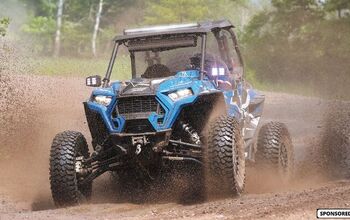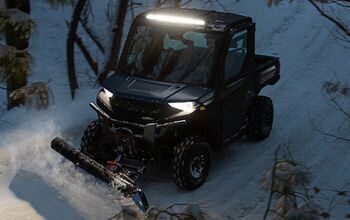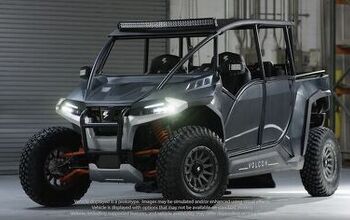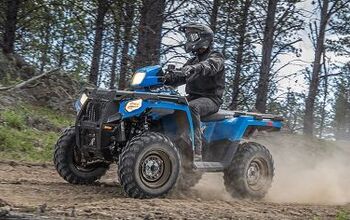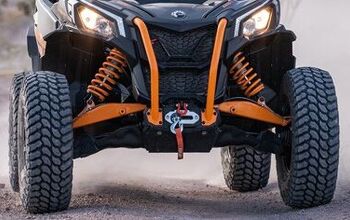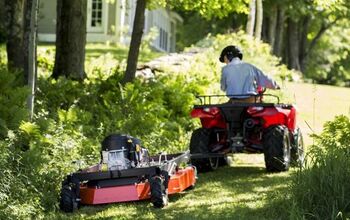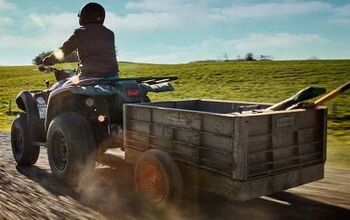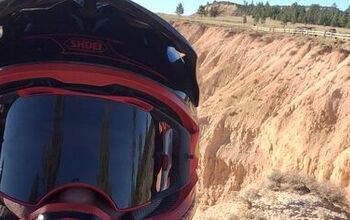Extend Your Season With Cold Weather Riding Gear
Just because the temperature has dropped, that doesn’t mean you have to stop riding your ATV or Side-by-Side (SxS). The reality is - riding in cold weather is fun and can really open up some amazing scenery to you if you are prepared for it. Getting the right cold weather riding gear can really extend your season, and is something you should consider, especially if you live in climates that have true seasonal shifts.
ATV.com thanks Yamaha for sponsoring this New Rider series.
Protect the Melon
Your helmet that you use for hot-weather riding will work for cold weather just the same, but you can add a few things to it to make it work right. If you wear a full-face dirt-style helmet, you can often get a cold-weather kit. This will include a breath box that closes off the front chinbar vents and wraps around your face closely to keep your breath in. You still breathe normally, but the harsh, cold wind cannot reach your face. If your helmet has closable vents in the top, close them for cold weather. Some helmet manufacturers produce a foam plug to close these vents off if there is no other way to do so. You can also wear a balaclava under your helmet to add some protection from the wind. This will also help provide some cold protection around your neck.
If you use goggles, cold weather goggles have thicker face foam to add some insulation, and protect your skin. The lenses are also double-paned and vented to protect against fogging. Fogging is a big issue in cold weather riding, as you don’t want anything that can interfere with your vision.
Gloves
Cold weather does a number on your hands, too. There is always the option of wearing thick gloves, like you would for other winter activities. Be aware that the grip may not feel the same. We tend to opt for cold-weather riding gloves that are made using neoprene and sealed seems. These gloves are waterproof and provide insulation from the cold, while at the same time, still feeling like riding gloves. This way you are not sacrificing any of the feel you are used to when you are riding.
Snowmobile gloves are another great option, as they are also designed for motorsports. You can even get powered gloves that have built-in heating elements. This will keep your hands nice and warm, and help you with keeping your same reaction time.
Boots
Since you are used to wearing some kind of boots when riding, you should consider something that works for cold weather, too. One option for keeping your feet warm is to wear heated socks. These socks are similar in thickness to normal riding socks, but have heater elements that will keep your toes warm. One thing we can stress is the importance of wearing something that is comfortable, and allows you to move the way you need to for riding activities. If you want to simply add disposable toe warmers to your normal riding boots, this can work, too. Just be sure you have the proper airflow to the boot to keep the chemical reaction of the toe warmers to work. Those disposable warmers are powered by the oxidation of iron, or rusting, so they need air to keep the reaction going.
Layers
Layering your clothing is the best way to keep warm for cold-weather riding. A base layer to move moisture away from your skin, followed by an insulating layer and then an outer layer that keeps wind from penetrating will help keep you warm. Just be sure that you aren’t impairing your movement. You need to be able to perform all the tasks of riding and have your ability to react to things be normal, too.
- Base layer - Should be a wicking material and be soft and comfortable against your skin. Should fit snug but not be binding or tight.
- Insulation layer - This layer is what keeps your body warm, and should also have the ability to absorb any moisture transferred by the base layer. Fleece is a great insulator.
- Outer layer - This layer should be fairly loose and allow full range of movement. Bibs or suspenders on your pants will help keep you from having a draft at the back. We suggest that this layer also be waterproof to help prevent you from getting soaked from the outside. GORE-TEX or other similar, breathable fabric really helps.
Hydration
One of the things that can get overlooked when it comes to cold-weather riding is staying hydrated. If your body is hydrated, your blood is flowing better, which is your body’s way of acting like a big radiator. You need good blood flow to stay warm, so riding hydrated is vital.
Having the proper cold weather riding gear and being prepared for the cold can really extend your riding season and give you more opportunity to enjoy your ATV or SxS. Stay hydrated and keep your skin covered properly to avoid exposure issues and you will enjoy the ride.
Check out the New Riders Hub for more articles geared towards new off-road enthusiasts.
Derrek's love for all things ATV started when he was a mere 11 years old, growing up on his family farm. His mom gave him and his sister a choice - get a horse, or a three-wheeler. The sister wanted the horse, and Derrek wanted the ATV. Luckily he won out, and was soon burning up the trails on a Yamaha Tri-Moto 200. By the time he was 14, he had saved enough of his own money by working on the farm and in his folks restaurant to buy a new 4-wheeler. That happened the day he and his mom were driving past the dealership and saw 1987 Banshee. His mom had no idea what he was buying, and he never looked back. He's been riding ever since, and been writing professionally for many years. He has ridden all over North America and been behind the controls of just about every machine out there. And yes, he still has his 1987 Yamaha Banshee.
More by Derrek Sigler



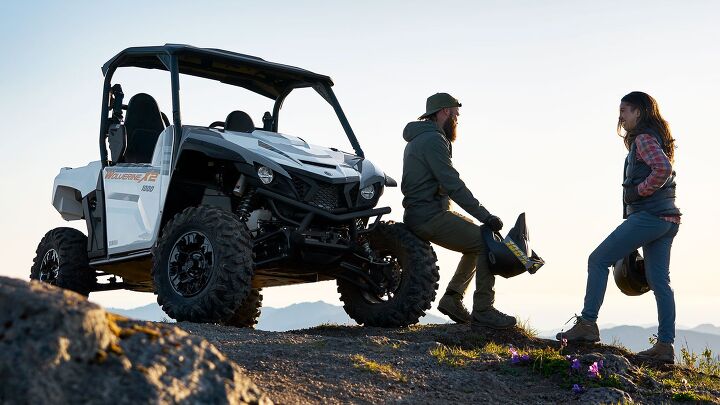








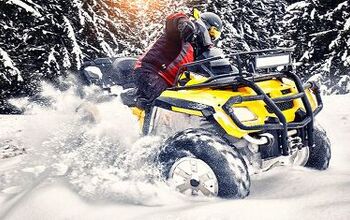

![Don't Try This at Home: Muddy Crash [video]](https://cdn-fastly.atv.com/media/2022/10/24/8744120/don-t-try-this-at-home-muddy-crash-video.jpg?size=350x220)
![More ATVs on Ice [video]](https://cdn-fastly.atv.com/media/2022/10/24/8742964/more-atvs-on-ice-video.jpg?size=350x220)
